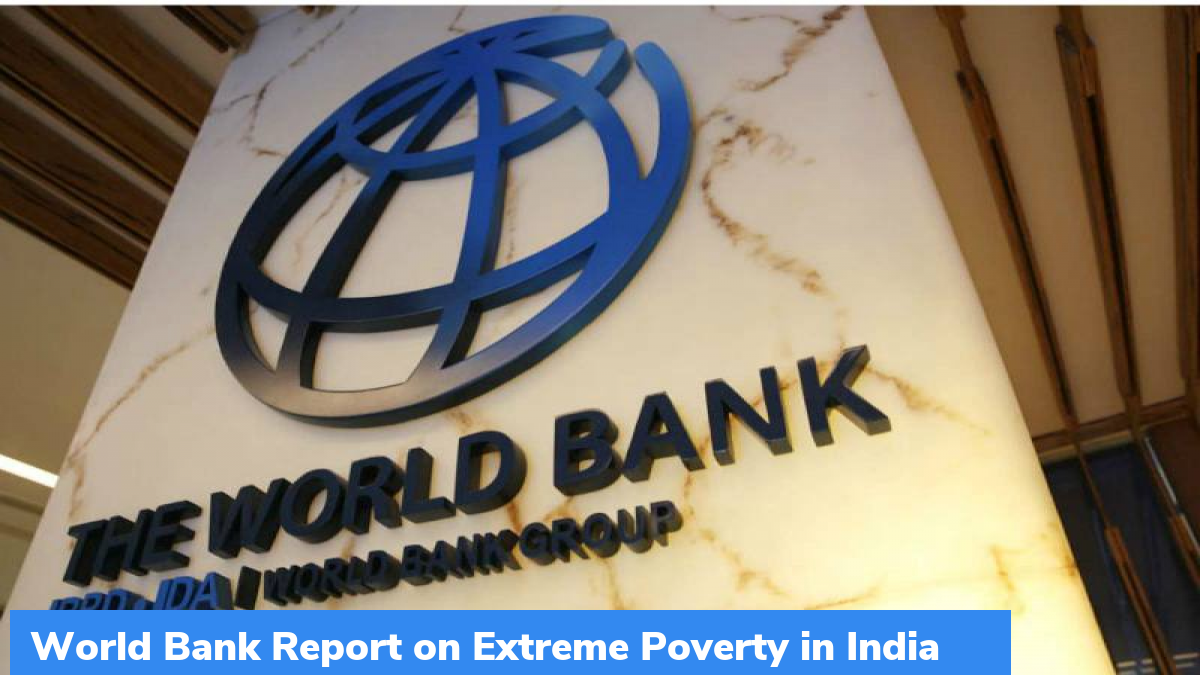World Bank Report on Extreme Poverty in India
According to a working paper of the World Bank, extreme poverty in India has dropped from 22.5 percent in 2011 to 10.2 percent in the pre-Covid year of 2019. Also, the pace of poverty reduction in rural India has been more than in urban areas of the country.
Overview:
- In the urban and rural areas poverty level declined by 7.9 percent and 14.7 percent respectively during the period 2011 to 2019.
- In 2019, the poverty level stood at 11.6 percent in rural areas and 6.3 percent in urban areas.
- In 2016, the year of demonetization, urban poverty rose by 2 percentage points while rural poverty rose by 10 basis points in 2019.
- The paper reported that the consumption inequality in India eased after 2011, with barely any change noticed between the periods 2015 and 2019.
- Farmers in the country having small landholding sizes also experienced higher growth in income.
How is extreme poverty measured?
The number of people living on less than USD 1.90 (around Rs 145) per day has been used to measure extreme poverty.
Working paper of the World Bank
The working paper of the World Bank is titled ‘Poverty in India Has Declined over the Last Decade but Not as Much as Previously Thought,’ and it has been authored by economists Roy van der Weide and Sutirtha Sinha Roy. This is the second such working paper released this month by the World Bank gauging poverty reduction in the country.
IMF Working Paper
An IMF working paper was also released that was authored by economists Karan Bhasin, Surjit Bhalla, and Arvind Virmani. This paper suggested that India’s extreme poverty was as low as 0.8 percent in 2019 and in 2020 also India managed to keep it at that level in spite of the pandemic due to food transfers made under the Pradhan Mantri Garib Kalyan Yojana.
Differences between both the papers
The IMF paper is based on the data from the 2011-12 consumption expenditure survey of the National Sample Survey Organisation (NSSO). The World Bank paper relied on the data from the Consumer Pyramid Household Survey (CPHS) of the Centre for Monitoring Indian Economy (CMIE). Also, the IMF estimated poverty reduction after the COVID-19 pandemic, while the latter focussed on the scenario of the country before the COVID-19 pandemic.
Month: Current Affairs - April, 2022
Category: Economy & Banking Current Affairs • India Nation & States Current Affairs • Reports & Indexes Current Affairs


